Matsushima class Cruisers (1889)
 Protected cruisers 1888-1926: IJN Matsushima, Itsukushima, Hashidate
Protected cruisers 1888-1926: IJN Matsushima, Itsukushima, Hashidate
The Yalu Protected Cruisers
These three cruisers played a role central at the battle of Yalu in 1894, and were at the same time an example of the alignment of Japan on the French “Jeune Ecole” (Young School) theories, which attacted attention from relatively modest navies, like the Japanese one at the time. It ws decided that French designer Emile Bertin would design three cruisers, started in 1888 in France and the first built in Nagasaki, Japan, for the need of the fleet. Quite extreme in design, they had a massive gun designed to out-range Chinese battleships, also counting on speed to out-manoeuver them. after the Sino-Japanese war, they also soldiered on at Tsushima and two survived as training ships after WW1.
General context of the order
In 1886, tensions with China were has been running higher and higher over Korea (as the German mil. advisor Jacob Meckel stated, Korea was “a dagger pointed at the heart of Japan”.’), it became clear that soon or later, both Empires would likely be at war over the peninsula. The political consensus about their wish of a Korean independence (it was under Chinese protectorate, under Li Hongzhang at the time) was as for the Meiji era , their importation of “civilization” from the West, in part also to better resist Western imperialism, and for Japan, through this plan, to play a major role on Korea.
Nevertheless the 1882 crisis in which Korean Rioters attacked the Japanese legation and the royal palace, nearly killing the Korean Royal Family. Under General Wu Changqing, the Chinese deployed about 4,500 troops, regained control and quelled the rebellion while the Japanese also sent four warships to safeguards their own citizens as well as a battalion to Seoul, and also to demand reparations. The Treaty of Chemulpo, signed on the evening of August 30, 1882 did not extinguished tensions still.
Early reform efforts in Korea suffered a major setback as the Chinese reasserted their firm grip over Korea, and started to manage their affairs directly. Soon a treaty was signed stipulating that Korea was dependent on China giving considerable advantages to Chinese merchants over Japanese or Foreigners. In practice in 1883, the country became a semi-colonial tributary state of China. Further tensions were ingnited between the ascendancy of the Min clan, the Gaspin coup, but the tipping point of all this was the Nagasaki Incident:
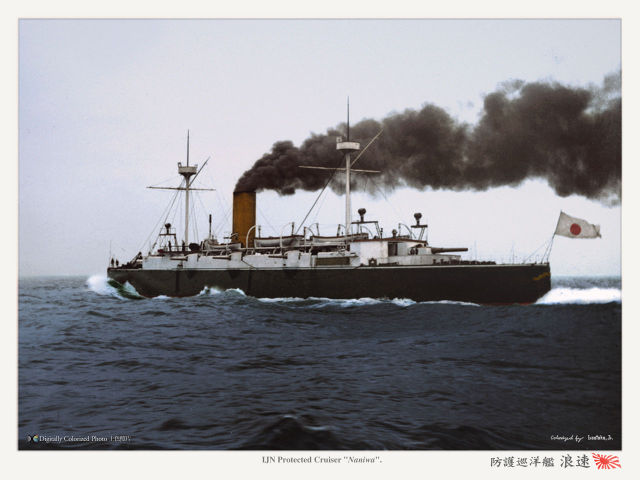
The previous IJN Naniwa, just completed on sea trials, 1885
The powerful Beiyang Navy, just created, stopped at Nagasaki for repairs in 1886, while some Chinese sailors on leave caused trouble in the city and started a riot which ended with gunfire by Policemen. The Qing government did not apologize and there was a wave of anti-Chinese sentiment in Japan. At the Japanese diet, debate rages over concerns of this new Chinese imperialism and this fleet, at the time, the largest of Asia. They could have blockaded Japan if need be, at least in their eastern waters.
Bertin’s influence on the IJN
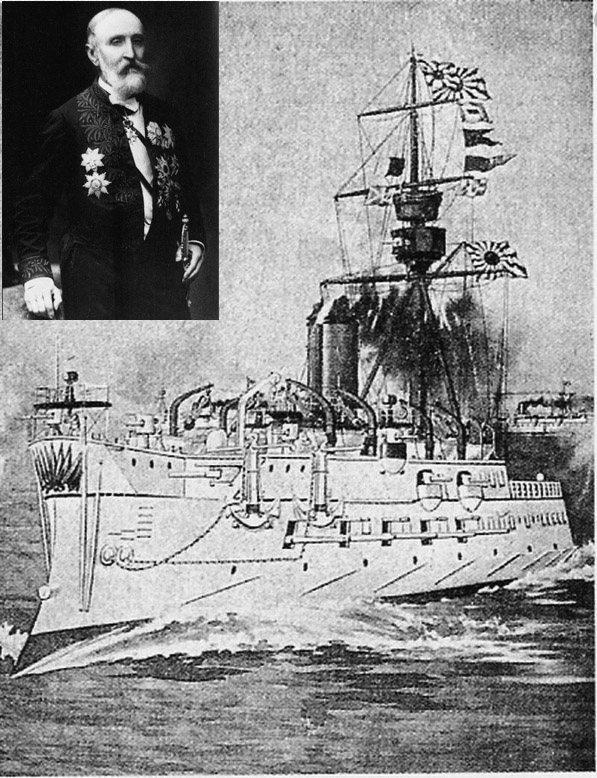
Emile Bertin (Medallion) and his creation.
This was enough to vote a new naval extension plan. At the time, the ageing Nihhon Kaigun counted two large Kongo-class armoured corvettes (1878), and the ironclad Fuso (1878) alongside other vessels of the Meiji era. So in 1884 were ordered three protected cruisers: Two of the Naniwa class in Britain (launched 1885) and IJN Unebi in France (launched 1886) to test and compare designs as they were the first protected cruisers of Japan. In 1886, it was decided to invite French engineer Emile Bertin and his team to Japan in order to develop the first Japanese Naval Yard and a Naval academy, provide new Protected and Armoured Cruisers Japan needed, and translate the Jeune Ecole theories to Japanes needs.
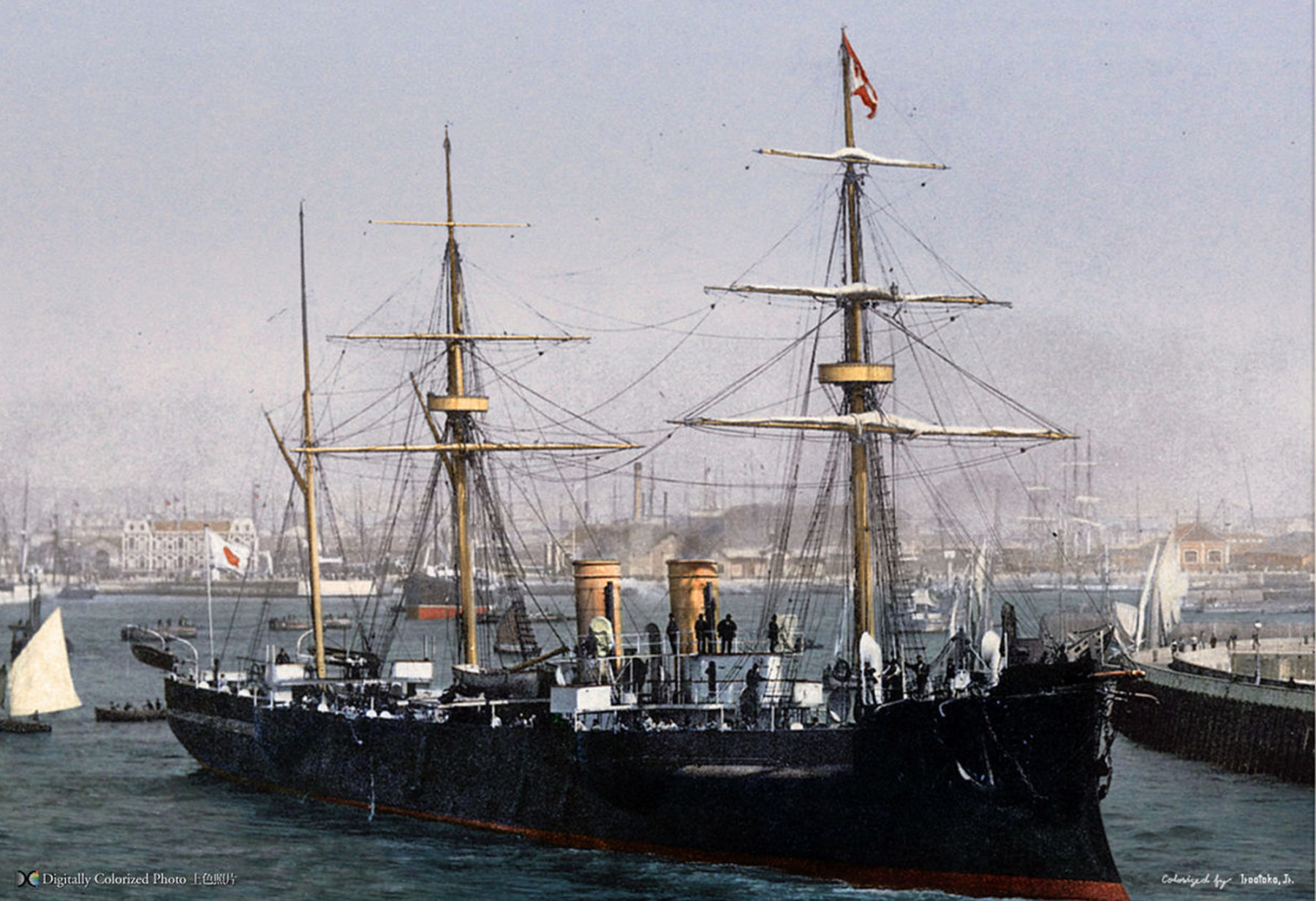
The French-built IJN Unebi, before departure from Le Havre, 1887. She capsized and sank with all hands in a typhoon, in October 1887, creating doubts over French designs at that stage.
Bertin designed about 150 classes and individual ship during his career (died 1924), and was member of the science and naval academies, he worked for ten countries and also received multiple awards for his work notably on cellular compartimentation onboard ships, widely used and soon a current feature for ASW protection and underwater hazards in general, the “caisson bertin”. In 1885 as hes was chief engineer, 2nd class of Maritime Genie and naval construction director at Brest, Bertin was invited by Emperor Mutsuhito and his government. He moved there with his family.
Japan then wanted to build a maritime power and called Bertin through the intermediate of Marquis Mochi-Aki Hachisuka, plenipotentiary of the Emperor in Paris, consented by President of the Council Charles de Freycinet on October 27, 1885, with a contract which was to begin on February 2, 1886, scheduled for three years and extended for a year, until March 1890. The Japanese government gave him the high rank of Takaku Yaku nin and Chokunin, senior official and personal adviser to Emperor Mutsuhito to have daily contact in the best possible conditions without going through the hierarchy, both with the high staff of the IJN and dignitaries of the regime.
At the start 1886, Japan’s relations with China were souring, as seen above, and Japan did not have a ship capable of opposing the two recent 7,400 ton battleships built in Stettin, the Dingyuan class. This was the first task given to Émile Bertin when he arrived in Tokyo, and it was the start of an ambitious construction program, with specialized engineers teams working on cellular protection, ventilation, speed and armament, approved by the Mikado and Japanese government without restriction.
Bertin became de facto responsible for all shipbuilding in the country and all procurements were subject to his decision. He devoted himself entirely to a monumental work with an aide-de-camp, the young engineer Shôzo Sakurai, his former student at the School of Maritime Engineering in Cherbourg. Both men were workaholic and he chose the most brilliant students to be recruited, notably Shôzo Sakurai, Genkizi Wakayama and Hajime Tatsumi.
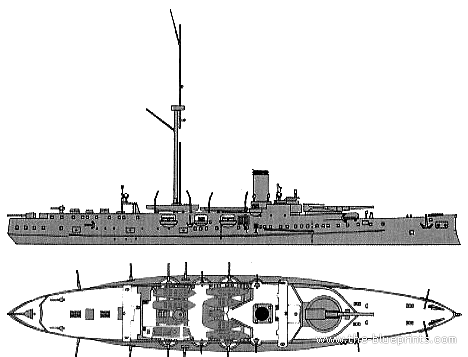
IJN_Itsukushima_Protected_Cruiser_1890-bp
Based on Émile Bertin’s plans, three 4,300-ton ships were therefore designed, dubbed “coastguards” the Matsushima class. Both her and Itsukushima however were to be built at La Seyne-sur-Mer since facilities were not ready in Japan to undertake such constructions. Hashidate nevertheless, the third of this class, was planed to be built at the Yokosuka Arsenal. Bertin also advised to built four Armstrong cruisers of 3,000-4,000 tons, three in England and one at Yokosuka, to be able to make comparative tests and construction techniques. He would also ordered the IJN Chiyoda, first IJN armoured cruiser, built in England to replace the Unebi, lost at sea.
He would also ordered a fast scout for the fleet, the 1,609-tonne IJN Yaeyama capable of 22 knots, quite a performance at the tim, made possible by the steel quality used an new type of boiler with a sister ship, again, built in Yokosuka. Bertin would also setup the Yokosuka Yard, provide all its network of suppliers, and even presided over the creation of a naval academy. He would also choose, propose, and built in support, the arsenals of Sasebo near Nagasaki and Kure, near Hiroshima. The Mikado and Empress came on several occasions, sponsoring or presiding over launch ceremonies.
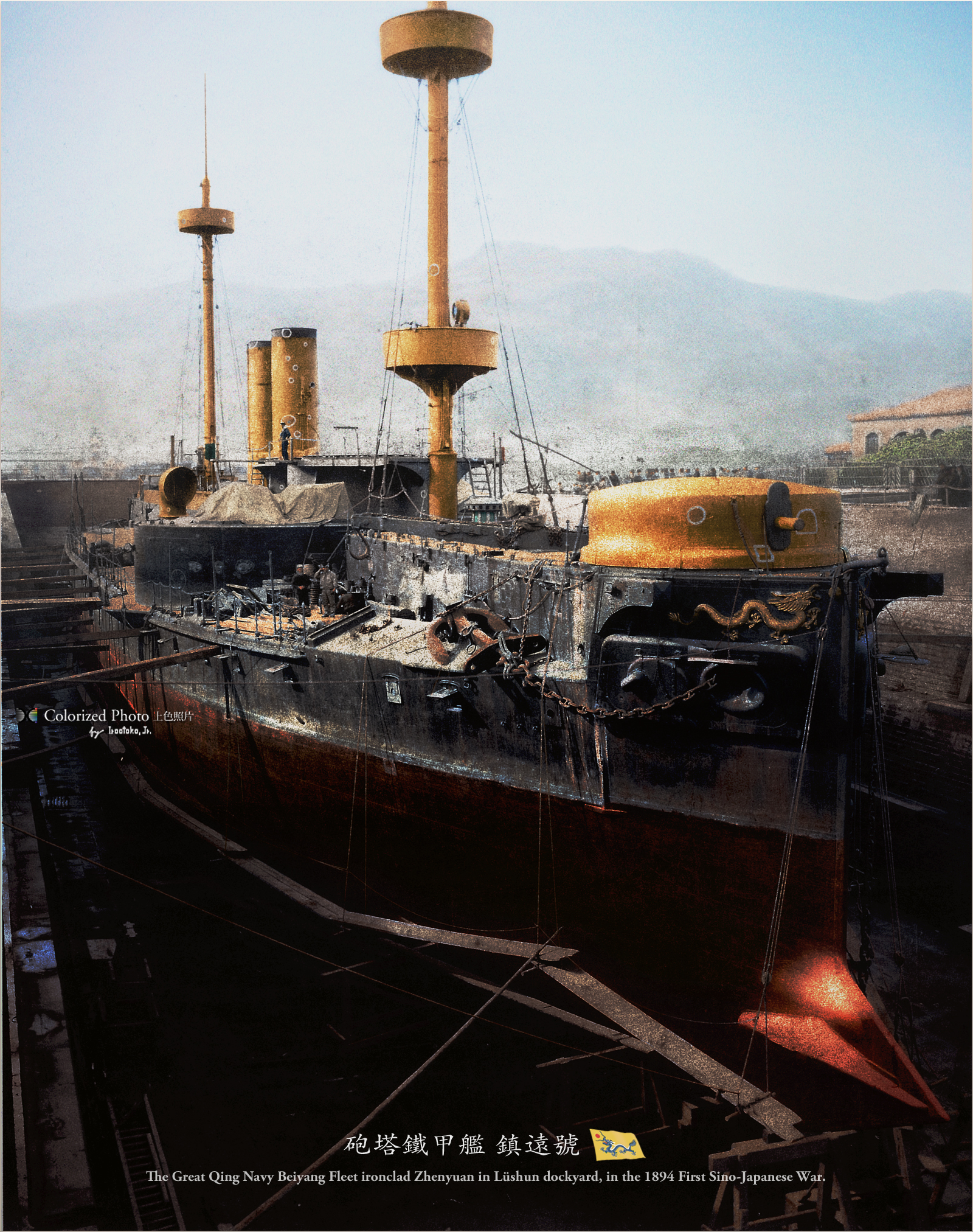
The Dingyuan and Zhenyuan, opponents of the Matsushima class
Design of the Matsushima Class
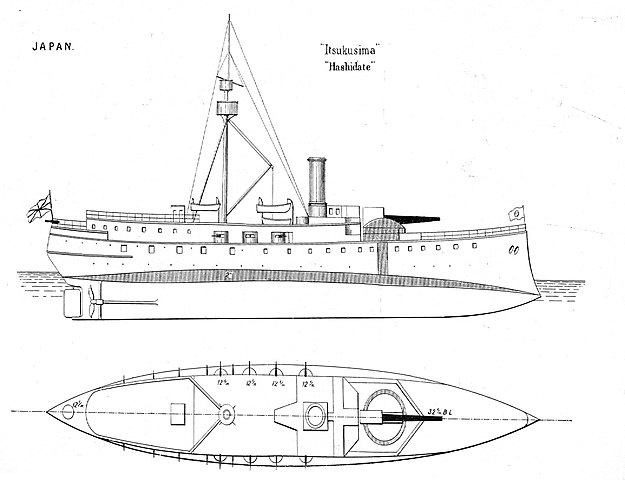
Itsukushima_brasseys_1900
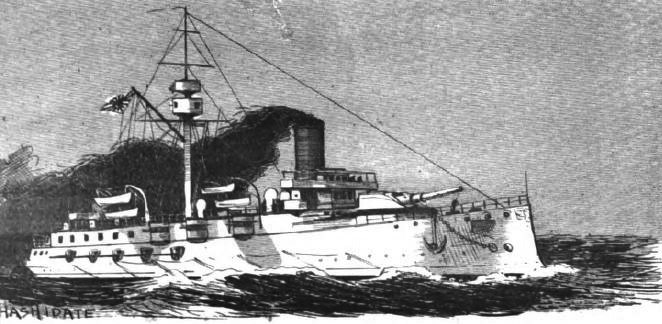
Hashidate_brasseys_1900
The protected cruisers each carried in an armored turret to dal with the Chinese battleships, a very powerful gun for the time. This was completed by twelve rapid-fire guns on board, essentially for defense. Protection was of course marked by ertin’s signature cellular compartimentation, similar to the French cruiser Sfax. Bertin drew up the plans and ordered the construction, with agreement of the Japanese government. On the tactical level, he advocated speed, firepower and line combat formation for best effectiveness.
Hull construction
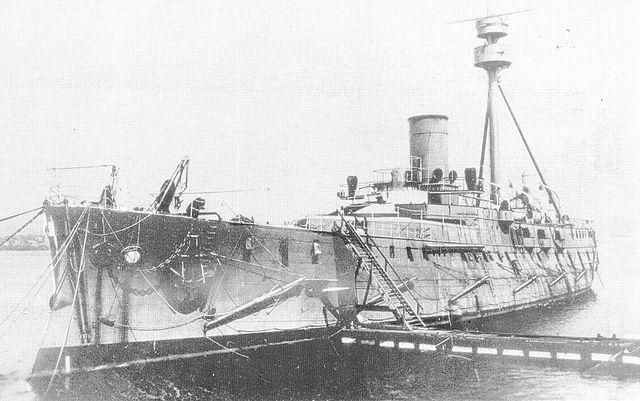
Itsukushima in France, prior of her departer to Japan
The Matsushima were the largest and most ambitious class of warhip ever ordered in Japan at the time: They displaced 4,217 long tons (4,285 t) standard for IJN Matsushima and 4,278 long tons (4,347 t) for tsukushima and Hashidate. They measured about the same, 91.81 m (301 ft 3 in) at the waterline, for 15.6 m (51 ft 2 in) in beam and a draft of 6.05 m (19 ft 10 in). They were very singular vessels, with a ram bow, forecastle, clipper stern, single funnel and single military mast at the center, and massive turret aft, mostly for stability reasons: Placing it on the forecastle would have compromise their metacentric height.
Protection
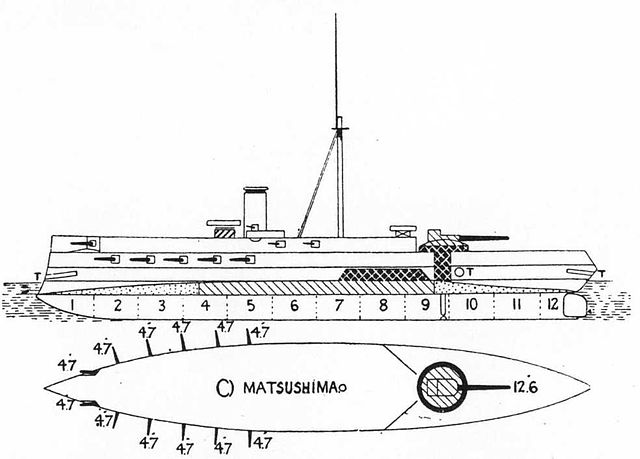
Plan_of_Matsushima-janes
For protected cruisers, it was as good as armoured cruisers, but partial, with thick figures. The French Creusot steel hulls were divided underwater with 94 frames separated by mild steel, and a double bottom divided itself into waterproof compartments. The area between the bulkheads and armor were filled with copra, dried coconut kernels mostly from India and Indonesia. The bow was reinforced to support schocks of its naval ram. All the vitals, notably the steering room, boilers rooms and ammunition magazines, were protected by hardened, reinforced Harvey steel armor, as gun shields.
- Deck: 50 mm (2 in)
- Gun turret: 300 mm (12 in)
- Gun shield: 100 mm (4 in)
- Machinery glacis: 50 mm (2 in)
- Conning Tower: 125 mm, 35 mm roof (4.9 in/1.3 in)
Armament
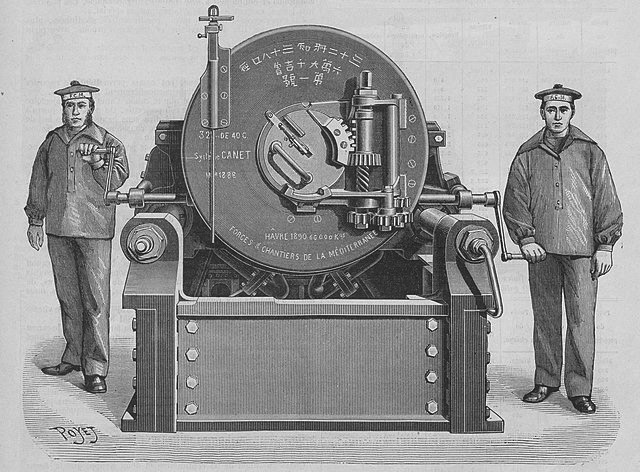
Canet 32 cm naval gun breech mechanism
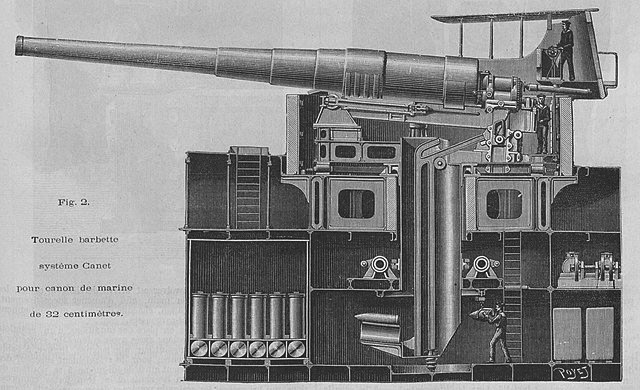
Canet gun pointer on Matsushima (both: Louis Poyet coll.)
Main armament:
Breech-loading 320-mm Canet gun forward, and moved aft for the sole Matsushima, to compare both configurations. These guns fireed a 450-kg armor-piercing or a 350-kg high explosive shell. Range was about 8,000 meters. To compare, the Dingyuan class had four 30.5 cm Krupp in twin turrets in echelon, and apparently they fired at Yalu at 5,300 yd (4,800 m), their maximal range, with no accuracy. So on paper, if the Matshushima were to be victorious, they needed to stay out of range based on a superior speed to disengage. Another crucial point was their maximum rate of fire, two rounds a minute with a provision of 60 rounds.
Secondary armament:
Between eleven and twelve QF 4.7 inch Gun Mk I–IV Armstrong guns. They were placed mainly forward in casemates along the hull, with two extra guns higher in teh prow, beyond recesses. That’s how they appeared on Janes, but this changed among ships. Matsushuma had this scheme, but the two Itsukushima/Hashidate had now bow guns, and all ten were placed at the center-rear amidhships casemates, plus a single one in the fantail aft.
They had a maximum range of 9,000 meters (9850 yds) and ideal rate of fire of 12 rounds/minute, compensating for the slow main gun. Each gun had 120 rounds in store.
Tertiary armament:
-Five or six QF 6 pounder Hotchkiss guns mounted in sponsons on the upper deck. Range was 6000 meters, rate of fire 20 rounds/minute. They had each 300 rounds in store.
-Two to five QF 3 pounder Hotchkiss mounted at various locations. Range was 2,200 meters, rate of fire 32 rounds/minute, and provision 800 rounds per gun.
Torpedo armament:
The three protected cruisers had four 356-mm torpedo tubes (14 inches), three in the bow, one in the stern above water. With these, they carried a total of 20 torpedoes on board. Type and specs unknown.
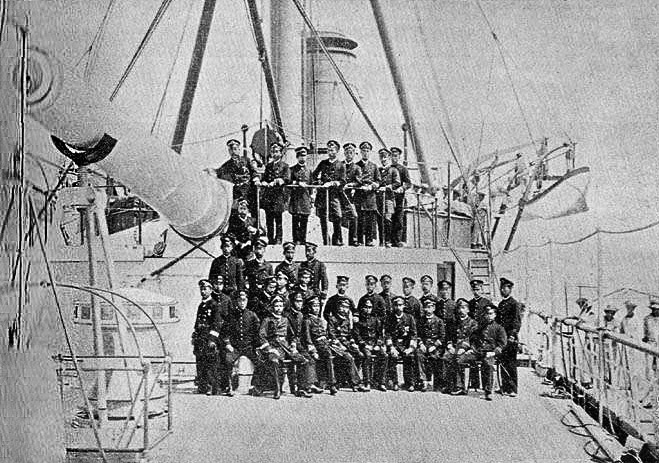
Gun crew of IJN Matsushima
Propulsion
Certainly the weak point of the design. Propulsion was to be provided by two shaft bronze 4-blade propellers, mated to triple expansion reciprocating steam engines (HTE) (Probably from Forges et Chantiers de la Méditerranée) with six boilers (likely small tubes models, perhaps Lagrafel), rated for 5,400 hp (4,000 kW), truncated into a single funnel. Theoretical speed was 16.5 knots (19.0 mph; 30.6 km/h), but this proved to be an urlealistic figure. On service they barely reached 15 knots, and even went down to 10-12 in heavy weather, not unfrequent in Japanese waters. Indeed Matsushima showed problems with seaworthiness, design speed was seldom attained in operation. A real problem for cruisers, and especially in the kind of tactics that were to be used, outrunning and ou-manoeuvering the Dingyuan class, which reached 15.4 knots (28.5 km/h; 17.7 mph) (real).
Construction
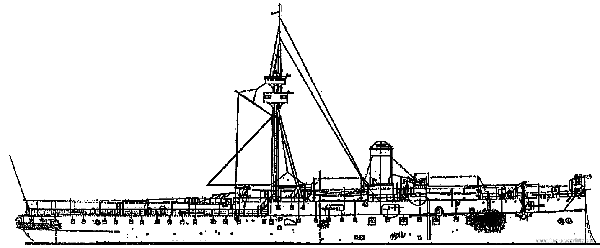
IJN Matsushima profile in 1905
IJN Itsukushima (厳島) was ordered to the Société Nouvelle des Forges et Chantiers de la Méditerranée in France, launched on 18 July 1889, completed on 3 September 1891. IJN Matsushima (松島) was ordered to the same shipyard, in another basin, and launched on 22 January 1890, to be completed on 5 April 1892. This was fast for this yard and era. In general battleships construction averaged ten years in the 1880s. On the other hand their design was well defined. Matsushima differed from the others with her aft Canet gun.
IJN Hashidate (橋立) was the third in this class (forward gun variant) and only built in Japan, by the Yokosuka Naval Arsenal, digigently created with assistance of Bertin, her construction watched carefully. She was laid down just a month later than the others, on 6 August 1888, but launched later, on 24 March 1891, then completed on 26 June 1894 so a total span of five solid years, in fact just in time for the sino-Japanese war.

⚙ Matsushima Specs 1890 |
|
| Dimensions | 91,81 m long, 15.6 m wide, 6 m draft (301 x 51 x 19 ft) |
| Displacement | 4,217 t. standard -4,278 t. Full Load |
| Propulsion | 2 shafts reciprocating, 2 boilers, 5,400 shp. |
| Speed | 16.5 knots (30.6 km/h; 19 mph) |
| Range | ? ( mi) |
| Armor | Deck 50 mm (2 in), Gun turret 300 mm (12 in)/shield: 100 mm (4 in) |
| Armament | 1× 320mm, 11-12× 120mm, 5-6× QF 57mm, 2-5 ×47mm, 4× 356mm TT |
| Crew | 360 |
Read More/Src
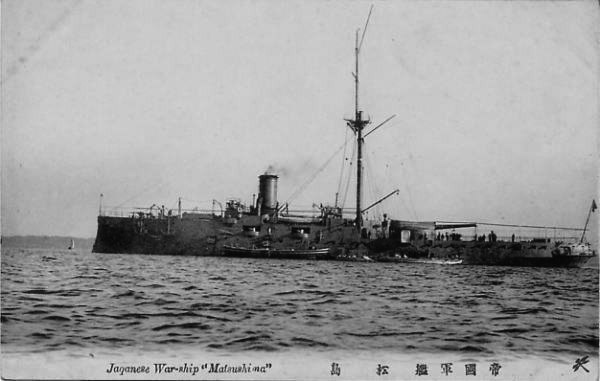
Books
Chesneau, Roger (1979). Conway’s All the World’s Fighting Ships, 1860–1905. Conways
Evans, David C.; Peattie, Mark R. (1997). Kaigun: Strategy, Tactics, and Technology in the Imperial Japanese Navy, 1887-1941.
Howarth, Stephen (1983). The Fighting Ships of the Rising Sun: The Drama of the Imperial Japanese Navy, 1895-1945.
Jane, Fred T. (1904). The Imperial Japanese Navy. Thacker, Spink & Co.
Jentsura, Hansgeorg (1976). Warships of the Imperial Japanese Navy, 1869-1945. Annapolis
Roksund, Arne (2007). The Jeune École: The Strategy of the Weak. Leiden: Brill..
Schencking, J. Charles (2005). Making Waves: Politics, Propaganda, And The Emergence Of The IJN, 1868-1922. Stanford.
Evans, David C.; Peattie, Mark R. (1997). Kaigun: Strategy, Tactics, and Technology in the Imperial Japanese Navy, 1887-1941.
Links
“Japanese 12.6″/38 (32 cm) Canet”. navweaps.com. 16 March 2006.
The IJN by Jane, Fred T. (Frederick Thomas), 1865-1916 Cornell University
imperial-japanese-cruisers on NE
Model kits
Sealsmodels 1:700, Foresight 1:700, Artist Hobby 1:700, FCM (FR)|Yokosuka kk (JP).
 IJN Matsushima
IJN Matsushima
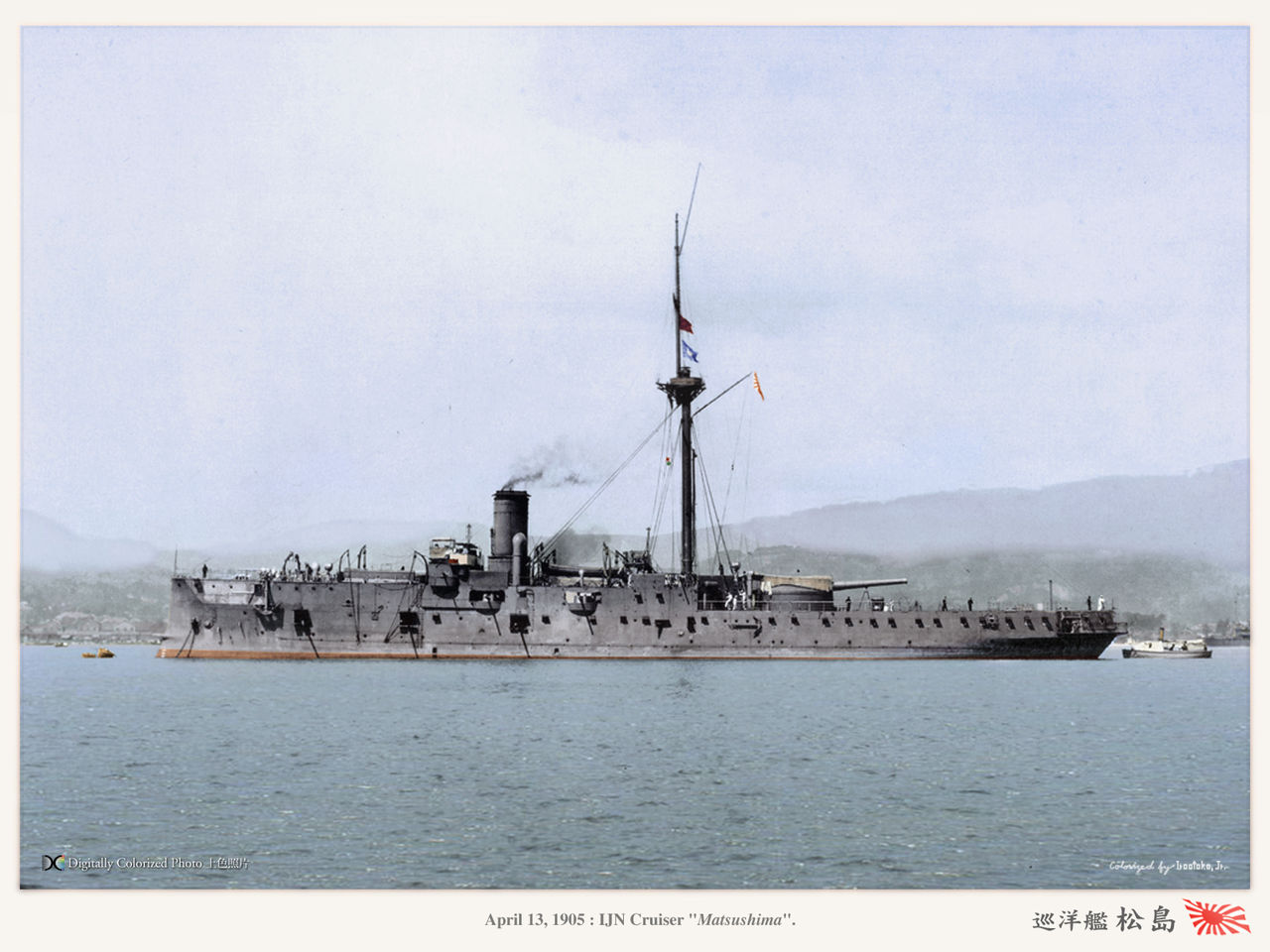
Matsushima was in Sasebo Naval District on 19 October 1892, comong from France, and she made a shakedown cruise (June-November 1893) with Takachiho and Chiyoda for 160-day and 7,000 nautical miles off the shores of China, Korea and Russia. When the first Sino-Japanese War erupted, she became flagship, Admiral Itō Sukeyuki. At the battle of the Yalu River, she led Hashidate, Chiyoda and Itsukushima, but fired only four times, destroying a turret on Pingyuan. She also received 25 cm shells on her unarmored starboard side, destroying her torpedo tubes, and killing 4. Fortunately the shell was a dud.
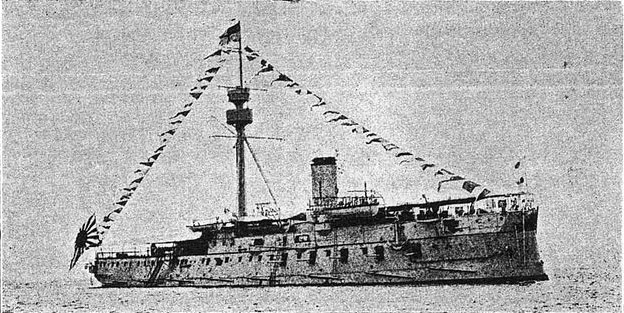
Two of 305-mm shells from Zhenyuan struck Matsushima also, one being a dud, holing the hull, but the other destroyed her No.4 120-mm gun, killing 28, wounding 68. The fire soon embrased three other guns. A non-commissioned officer became a hero that day, stuffing his uniform into cracks in the bulkhead to prevented spread to the nearby ammunition magazine. She also took hits from small caliber, having her smokestack, masts, and deck equipment crippled, so much so that she had to withdrawn. In all she emerged from the battle with 57 dead, 54 wounded, half the Japanese casualties in this battle while Admiral Itō transferred his flag to Hashidate.
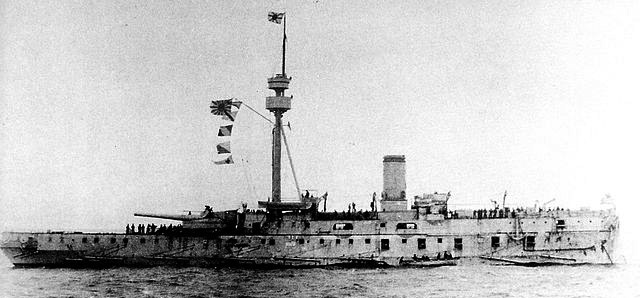
In 1895
IJN Matsushima repaired in Kure in just 26 days, able to participate in the Battle of Lushunkou and Battle of Weihaiwei. While shelling fortifications of Weihaiwei she was hit by two shells from a fort, destroying her chart house and smokestack, her deck armor wounding two. The Beiyang Fleet reresentative signed the surrender on her deck. Later she covered the invasion of Taiwan in 1895, and on 3 June 1895 shelled Chinese coastal forts at Keelung.
She was anchored in the Seto Inland Sea when struck by a typhoon on 29 October 1897 when hit by Fuso, which collided with her ram and later sunk. After repairs she was reclassified 2-class cruiser in 1898 with Prince Arisugawa Takehito as captain and later Uryū Sotokichi. On 3 May-15 September that year, she patrolled between Taiwan and Manila as tension grew during the Spanish–American War. By April 1900, she took part in marge maneuvers, and deposed a landing party during the Boxer Rebellion. Later she was overhauled at Sasebo Naval Arsenal (February 1901) having six boilers replaced, smaller guns upgraded with modern 76-mm and QF 3-pounder guns.
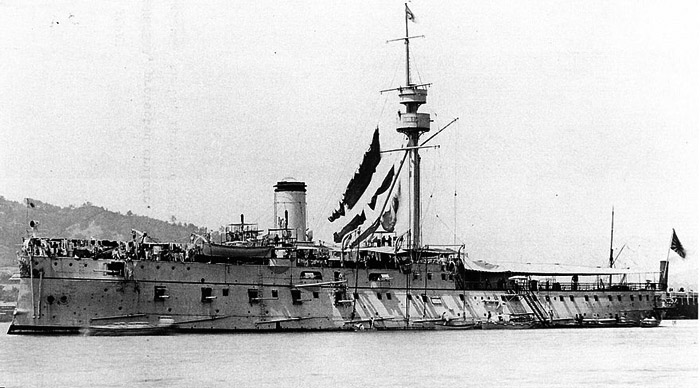
In 1896
In 1902, she was sent to Minami Torishima, to face American claims and in 1903, made a long trauing cruiser in Southeast Asia and to Australia with her sister ships, for the first time. During the Russo-Japanese War, she was in the 5th squadron, reserve 3rd Fleet, at the Takeshiki Guard District, Tsushima, patrolling the Korea Strait by February 1904. In May she covered the 2nd Army troopships across the strait and took part in the blockade of Port Arthur.
She was not directly involved in the Battle of the Yellow Sea shadowin the fleet on 10 August. After the Battle of Port Arthur she was reassigned to Hakodate, patrolling the Tsugaru Strait, capturing the British steamship Istria with carrying contraband coal through Port Arthur, despite the blockade. By 28 February Matsushima was trapped in sea ice, off Kunashir but broke free alshough lossing her right propeller and being repaired in March–April 1905 in Sasebo.
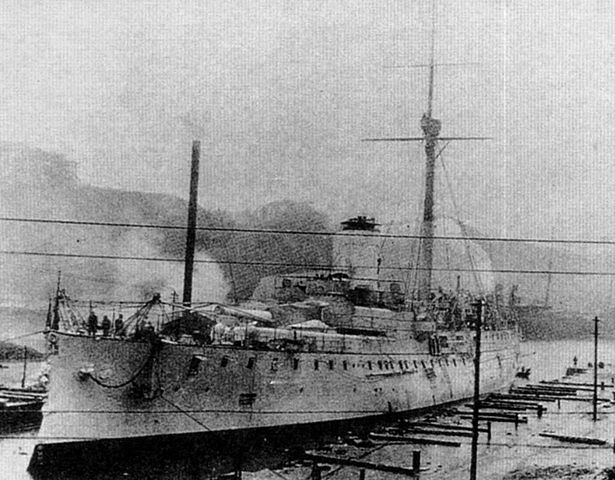
In dock, 1902
She took part in the Battle of Tsushima, as part of the 5th Division, exchanging fire with the cruisers Oleg and Aurora, but having her steering hit. She was lated repaired and sent back, just to witness Admiral Nebogatov’s surrender. She later became flagship, Admiral Dewa Shigeto (4th Fleet) to take part in the invasion of Sakhalin (summer 1905) and later overhauled at Sasebo (September-October). After the war she became a training vessel, with long training cruises with Academy cadets, to Southeast Asia, and down to Australia in 1906-1908.
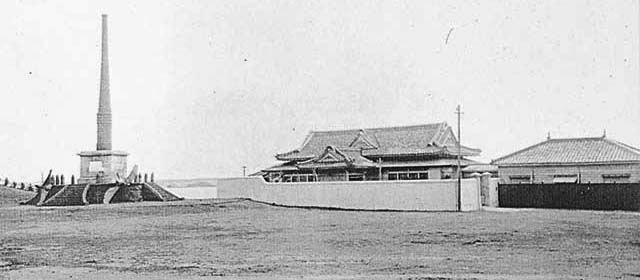
On 30 April that year she was anchored at Mako (Pescadores islands) which struck by an accidental ammo magazine explosion. The blast was devastating and her hull was completed torned out, and quickly flooded, untl she capsized and rolled over on starboard, sinking stern-first, carrying with her 206 crew members, including 33 midshipmen. She was struck on 31 July 1908, her wreck later recovered and scrapped. A memorial was erected at the temple of Omido-ji, Mihama, Aichi prefecture and modern park memorial in Magong City park, Penghu County, Taiwan close to where she sank.
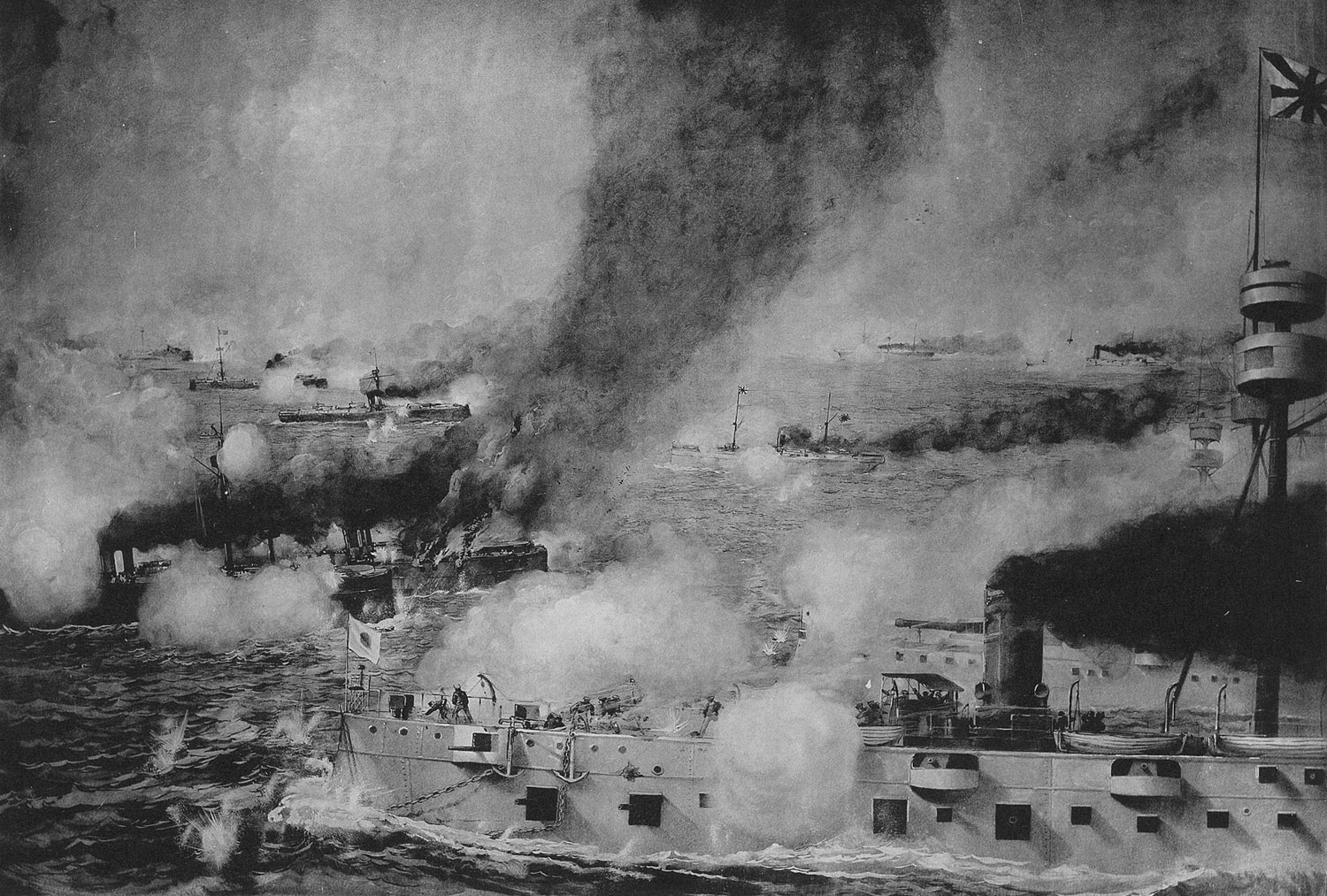
Flagship Matsushima in the midst of the battle, painting detail
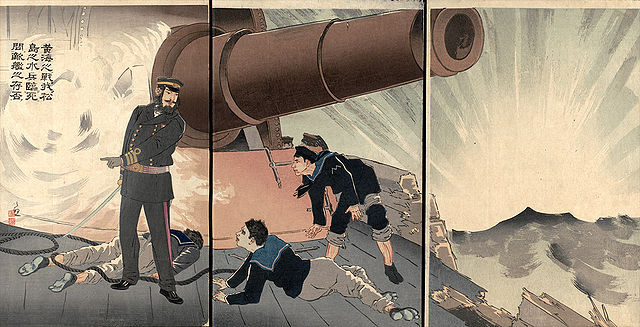
Matsushima Gun, Traditional tryptich Print of the Yalu battle
 IJN Ikutsushima
IJN Ikutsushima

IJN Itsukushima was accepted into service by the Imperial Japanese Navy on 3 September 1891. She departed Toulon for Japan with her partly Japanese crew on 12 November but during the voyage suffered a grave tube boilers leakage, so much so she had to stip to Colombo (Ceylon) for repairs, by a team with spares coming From France. Thus she only left Colombo on 18 April 1892, for Kure Naval District, that she reached on 21 May 1892.
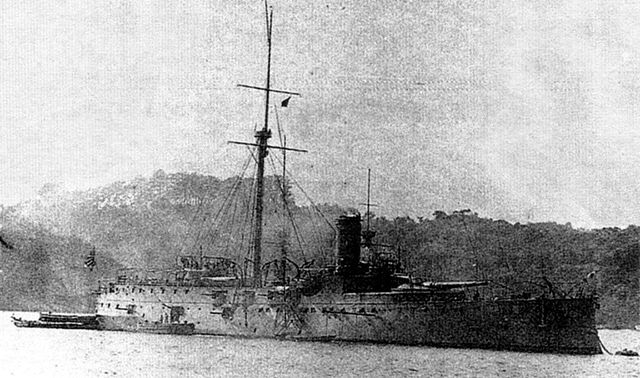
Itsukushima_in_Yokosuka_1908
She had two years to train, between gunnery exercizes and fleet manoeuvers, plus yearly maintenance. Two years before she was thrown into war:
First Sino-Japanese War
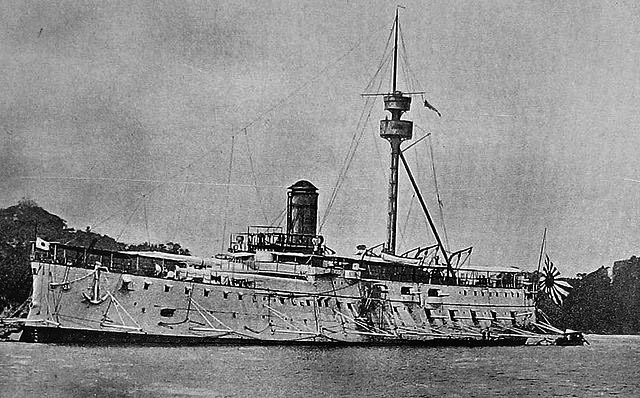
A modern vessels in the Imperial Japanese Navy she took the head of the main Japanese fleet, under command Vice Admiral Itō Sukeyuki. Her first test was the Battle of the Yalu River (17 September 1894). She was third in the line of battle, behind Matsushima and Chiyoda. For the whole battle, like her sister ships, she could only fire her Canet gun five times. She however managed to hit the Chinese flagship Dingyuan four times, Zhenyuan once making good of these only shots. These shells however failed to create critical damage on either vessel. This was traded in return by eight hits. One penetrated her engine room and exploded in her bow torpedo room, fortunately without detonated them. Another her main mast. She had 15 killed, 17 wounded.
After the battle, IJN Itsukushima protected troopships convoys to Manchuria. She saw combat at the Battle of Weihaiwei on 9 February 1895, hit by a dud from a Chinese coastal battery.
Interwar years
IJN Itsukushima anchored in the Seto Inland Sea, off Nagahama, Shikoku, when struck by a typhoon on 29 October 1897. As Fusō’s anchor chain broke, she drifted across the harbor to collide with IJN Matsushima’s own ram before struck Itsukushima, before the gash created by her sister’s ship partly flooded her. But she eventually sank after hitting a reef, in shallow water, later refloated and repaired. Itsukushima’s hull damage was light and was quickly repaired.
Reclassified as a 2nd class cruiser on 21 March 1898, she still had boilers problems, so much, they were eventually de-pressurized by February 1900. This limited her top speed to 12.5 knots (23.2 km/h; 14.4 mph). Her 37 mm guns were were replaced by six Maxim guns also. The Boxer Rebellion saw her redeployed Itsukushima to Shanghai, protecting Japanese assets and citizens under threat. On 25 February 1901 she sailed with IJN Hashidate for a long training tour, stopping at Manila, Batavia, Hong Kong, Chelumpo, Pusan, Gensan, and Vladivostok before going bacl to Yokosuka (14 August 1901). Immediately after she was drydocked and overhauled. This time her troublesome boilers were removed and replaced by recent Belleville boilers. Her light armament was deleted and simplified, retaining only two Vickers 76 mm guns and eighteen QF 3 pounder Hotchkiss 47 mm models (2 in).
In March 1903, she departed with Matsushima and IJN Hashidate as flagshi on 15 February 1903 for another long training cruise, stopping again at Hong Kong, Singapore, Batavia, but also heading south to Oceania, stopping at Perth, Adelaide, Melbourne, Sydney, Wellington, Auckland, Sydney, Townsville, before stoppong underway home to Thursday Island, Manila, Amoy, and Fusan. This was a first for Australia, seeing its fiest Japanese fleet visit since 1887 (jubilee of Queen Victoria). By that time they all had Marconi wireless telegraphy, used also for the same time in Australia. Captain K. Matsumoto was comprehensively interviewed by a Perth journalist while in stay. Next, Itsukushima made comparable training cruises in 1906, 1907, and 1914, but never as extensive.
Russo-Japanese War
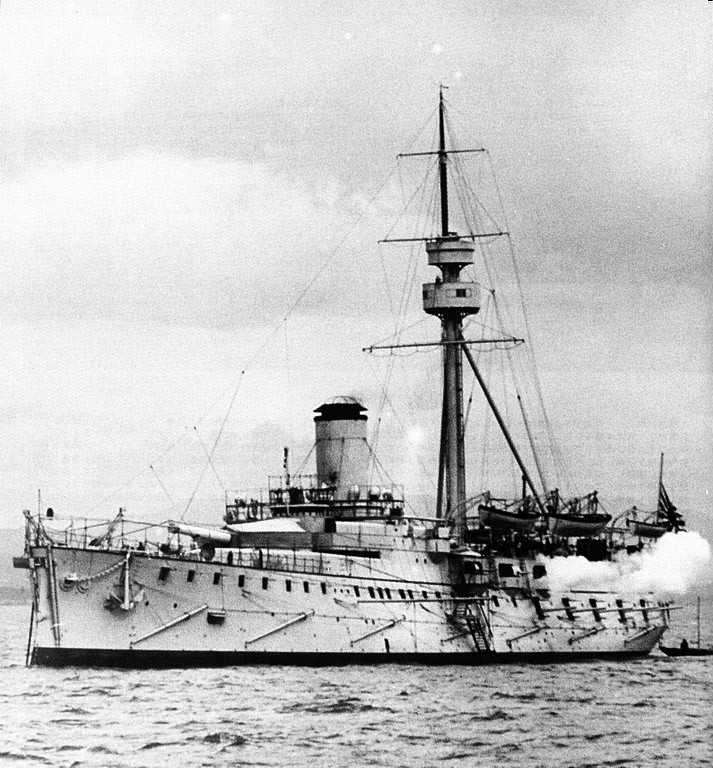
Japanese_cruiser_Itsukushima’s prow
Although obsolete these cruisers were still active, and they were assigned to the 5th squadron, reserve 3rd Fleet with the ironclad Chin’en. The squadron was under command of Admiral Kataoka Shichirō. They were assigned to support the blockade of Port Arthur, a relatively “cushy” assignment, patrolling the area and escorting vessels in the Korea Strait. Their mission started in February 1904, heading from Takeshiki Guard District (Tsushima island). Itsukushima covered the Japanese First Second Army landings in Manchuria. In June-July she did not take part in the Battle of Port Arthur but patrolled the harbor mouth, though later she was asked to provide shore bombardment of Russian positions, taking advantage of her old, heavy Canet gun.
On 26 June as the Russian squadron sorties, she duelled for a short time with the cruiser Novik. For the 9 July sortie, it was with Bayan. On the 26th, she eschanged fire with Bayan again, as Askold and Pallada, taking some hits, without much gravity. She was withdrawn for repairs when on 10 August 1904 took place the Battle of the Yellow Sea, yet she saw the Russian fleet back to Port Arthur. She was left in the entrance until the Russian surrender, in January 1905. On 8 February after the city fell, she Itsukushima returned to Kure for longer repairs until 22 March. On 5 April, she was back in the Korea Strait’s Tushima’s station.
There, she took part first hand in the Battle of Tsushima on 27 May 1905, as flagship, 3rd Squadron (Vice Admiral Kataoka). She duelled first with the cruisers Oleg and Aurora. Later around 16:30 she engaged the fleet at 8,000 meters (8,700 yd) and past sundown, assisting in the sinking of the repair ship Kamchatka and battleship Knyaz Suvorov. She took no damage that day. Russian Admiral Nebogatov surrendered on 28 May, and Itsukushima was detached to look for any stragglers en route for Vladivostok, but found none.
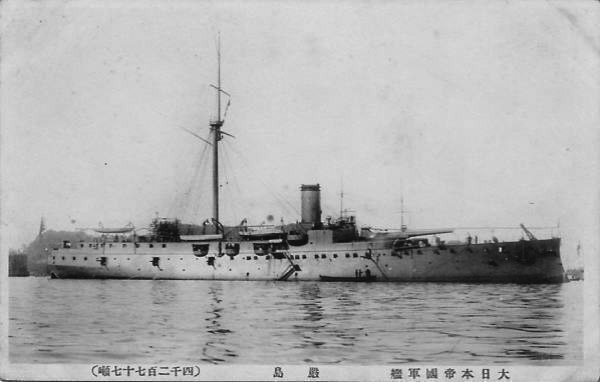
Back to patrolling the Korea Strait on 30 May until 14 June, she was reassigned to the Sakhalin invasion fleet. The operations went without a hitch in July, under cover of her guns. She was next assigned to the Tsugaru Strait patrol, before being sent back to Yokosuka Naval for repairs and overhaul, on 26 August. She wasn out in time to participate to the grand Victory naval review off Yokohama on 23 October. On 28 August 1912, she was re-classified as a 2nd “coastal defense vessel”. Later, during WWI as crews were needed for more recent vessels, she was left with a skeleton crew, anchored as a submarine tender. Fully demilitarized on 1 September 1920, she was re-classified again as a training hulk, allowed later by the Washington treaty. Due to her age, she was struck from the list, scrapped on 12 March 1926, at Kure.
 IJN Hashidate
IJN Hashidate
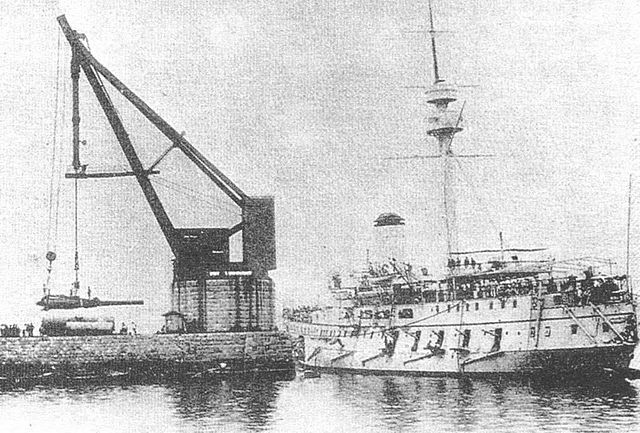
IJN Hashidate emerged from Yokosuka Naval Arsenal after a longer construction time than her sister shps, notably due to its imported parts from France and inexperience of the builders. After three solid years (she was launched in presence of the Meiji Emperor) she started her sea trials complicated with boilers issues, commissioned at last on 26 June 1894 despite, having one of her boilers repairs. Soon, she was thrown into the first Sino-Japanese War.
Hashidate took part in the First Sino-Japanese War, under Commander Hidaka Sōnojō, fourth place in the battle line, at the Battle of the Yalu River. In front of her were IJN Matsushima (flasghip), Chiyoda and Itsukushima. Like her sisters she fired only four times but failed to make any hit. She Hashidate became flagship, Admiral Itō Sukeyuki, when he sister ship Matsushima was badly damaged, and suffered herself eleven hits, with two officers and a salior killed, nine wounded.
IJN Hashidate remained flagship, taking part in that guise to the Battle of Lushunkou, providing ground support, dealing with Dalian harbor forts on 6/7 November 1894 and also taking part in the the Battle of Weihaiwei on 30 January 1895 and 7 February, shelling Weihaiwei harbor fortifications, entering the harbor to accept the Chinese surrender (12 February).
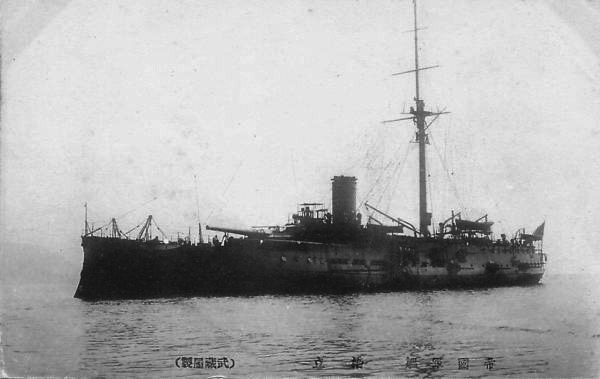
Postcard
After repairs iback home and notably having her troublesome boilers fixed, she still on trials was unable to pass 10 knots and became a 2nd class cruiser, on 21 March 1898. She took part in the large maneuvers in April 1900, notably naval blockade exercizes in Yokosuka, but withheld from participating in the Boxer rebellion expeditionary force.
On 25 February 1901 however she departed Yokosuka with Itsukushima departed Yokosuka for a long training cruise, stopping in Manila, Batavia, Hong Kong, Chelumpo, Pusan, Gensan, Vladivostok and back to Yokosuka on 14 August 1901. In 1902, at least she had the overhaul she deserved: All her boilers were replaced by modern Japanese-designed Miyabara Water-tube boilers, first in the Japanese navy to receive them. Speed trials held on 20 October 1902 showher attaining 16 knots. Her secondary armament was also replaced by two 76-mm (3-in) guns, 18 QF 3-pounder Hotchkiss. Now having “longer legs” she made another long asian cruise in 1903.
The Russo-Japanese War saw her (Captain Katō Sadakichi) and her sister ships assigned to the 5th squadron, reserve 3rd Fleet, based at Takeshiki Guard District (Tsushima) patrolling the Korea Strait and escorted transports in May. Soon, she was sent to take part in the Port Arthur blockade. She encountered the path of Russian cruiser Bayan (9 July) and on 10 August, spotted the Russian squadron, thus, taking part in the Battle of the Yellow Sea. She started from afar but catched up eventually, pursuing the retreating Russians to Port Arthur. On 10 December with Itsukushima, she picked survivors and supported the mine-crippled IJN Akashi.
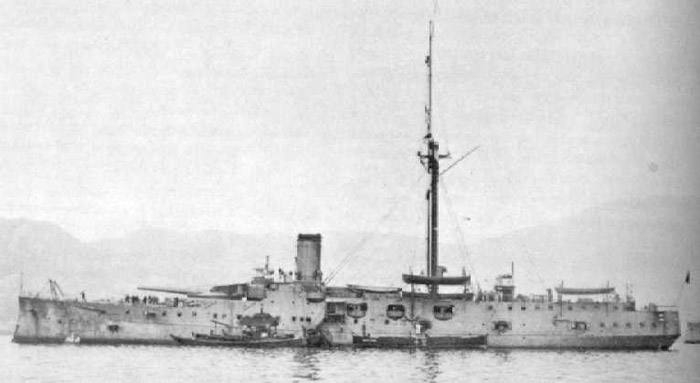
Hashidate November 1908
The 27 May 1905 at the the Battle of Tsushima, IJN Hashidate was at the rear of the Russian formation, hitting Oleg, and assisting with destroying Knyaz Suvorov. She was also hit twice, with 7 crewmen wounded.
With the 4th Fleet, she provided protection for the invasion of Sakhalin (July–August 1905) and stayed in Yokosuka Arsenal from 20 October, taking part in a victory naval review in Yokohama (23 October). Her career was more cushy afterwards. Northing much happened, as she was assigned for long-distance training cruises, making several of them in Southeast Asia and Australia (1906-1907), a 1908 cruise and in 1909 was overhauled, loosing her 47-mm guns for 76-mm guns. Nothing much happened until 28 August 1912, when re-classified as 2nd class. She was aa static vessel durng WWI, freeing crews for more modern ships and was struck on 1 April 1922, but only sold for BU in 1927.
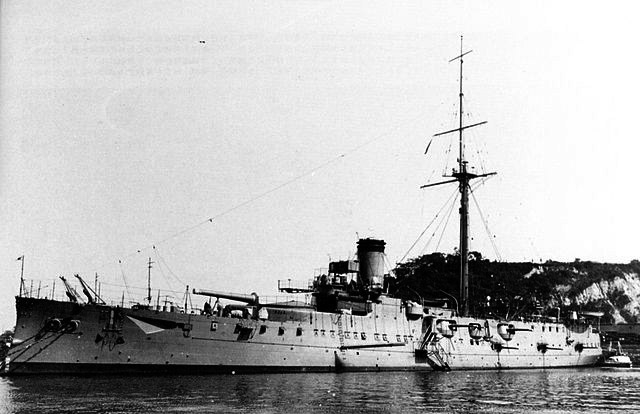
Hashidate in 1916.



 Latest Facebook Entry -
Latest Facebook Entry -  X(Tweeter) Naval Encyclopedia's deck archive
X(Tweeter) Naval Encyclopedia's deck archive Instagram (@navalencyc)
Instagram (@navalencyc)





 French Navy
French Navy Royal Navy
Royal Navy Russian Navy
Russian Navy Armada Espanola
Armada Espanola Austrian Navy
Austrian Navy K.u.K. Kriegsmarine
K.u.K. Kriegsmarine Dansk Marine
Dansk Marine Nautiko Hellenon
Nautiko Hellenon Koninklije Marine 1870
Koninklije Marine 1870 Marinha do Brasil
Marinha do Brasil Osmanlı Donanması
Osmanlı Donanması Marina Do Peru
Marina Do Peru Marinha do Portugal
Marinha do Portugal Regia Marina 1870
Regia Marina 1870 Nihhon Kaigun 1870
Nihhon Kaigun 1870 Preußische Marine 1870
Preußische Marine 1870 Russkiy Flot 1870
Russkiy Flot 1870 Svenska marinen
Svenska marinen Søværnet
Søværnet Union Navy
Union Navy Confederate Navy
Confederate Navy Armada de Argentina
Armada de Argentina Imperial Chinese Navy
Imperial Chinese Navy Marinha do Portugal
Marinha do Portugal Mexico
Mexico Kaiserliche Marine
Kaiserliche Marine 1898 US Navy
1898 US Navy Sovietskiy Flot
Sovietskiy Flot Royal Canadian Navy
Royal Canadian Navy Royal Australian Navy
Royal Australian Navy RNZN Fleet
RNZN Fleet Chinese Navy 1937
Chinese Navy 1937 Kriegsmarine
Kriegsmarine Chilean Navy
Chilean Navy Danish Navy
Danish Navy Finnish Navy
Finnish Navy Hellenic Navy
Hellenic Navy Polish Navy
Polish Navy Romanian Navy
Romanian Navy Turkish Navy
Turkish Navy Royal Yugoslav Navy
Royal Yugoslav Navy Royal Thai Navy
Royal Thai Navy Minor Navies
Minor Navies Albania
Albania Austria
Austria Belgium
Belgium Columbia
Columbia Costa Rica
Costa Rica Cuba
Cuba Czechoslovakia
Czechoslovakia Dominican Republic
Dominican Republic Haiti
Haiti Hungary
Hungary Honduras
Honduras Estonia
Estonia Iceland
Iceland Eire
Eire Equador
Equador Iran
Iran Iraq
Iraq Latvia
Latvia Liberia
Liberia Lithuania
Lithuania Mandchukuo
Mandchukuo Morocco
Morocco Nicaragua
Nicaragua Persia
Persia San Salvador
San Salvador Sarawak
Sarawak Uruguay
Uruguay Venezuela
Venezuela Zanzibar
Zanzibar Warsaw Pact Navies
Warsaw Pact Navies Bulgaria
Bulgaria Hungary
Hungary

 Bundesmarine
Bundesmarine Dutch Navy
Dutch Navy Hellenic Navy
Hellenic Navy Marina Militare
Marina Militare Yugoslav Navy
Yugoslav Navy Chinese Navy
Chinese Navy Indian Navy
Indian Navy Indonesian Navy
Indonesian Navy JMSDF
JMSDF North Korean Navy
North Korean Navy Pakistani Navy
Pakistani Navy Philippines Navy
Philippines Navy ROKN
ROKN Rep. of Singapore Navy
Rep. of Singapore Navy Taiwanese Navy
Taiwanese Navy IDF Navy
IDF Navy Saudi Navy
Saudi Navy Royal New Zealand Navy
Royal New Zealand Navy Egyptian Navy
Egyptian Navy South African Navy
South African Navy






























 Ukrainian Navy
Ukrainian Navy dbodesign
dbodesign